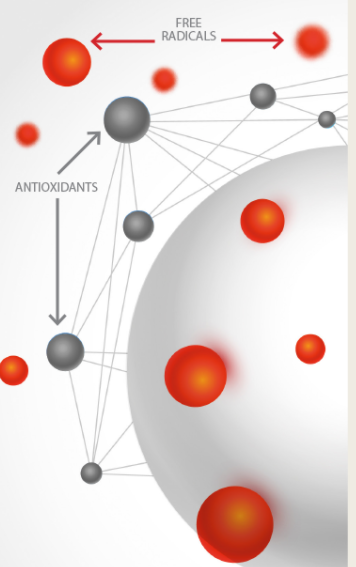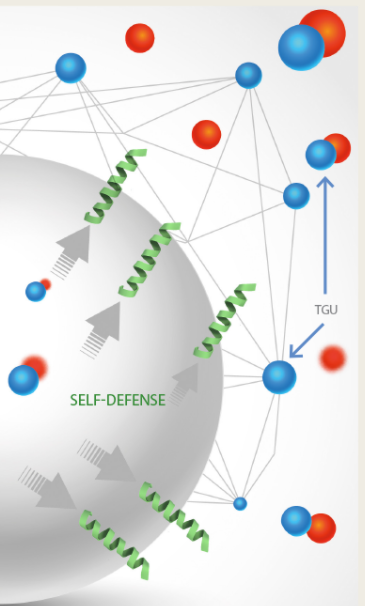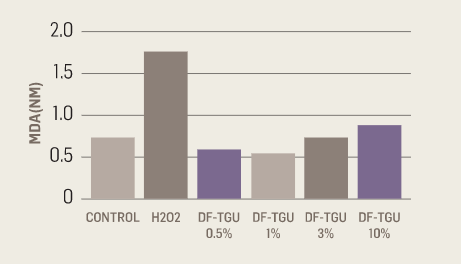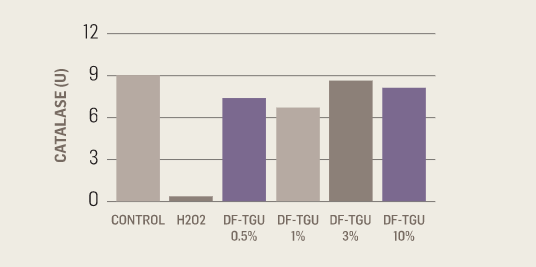Enhanced TDS
Knowde-enriched technical product data sheet
Identification & Functionality
- INCI Name
- Ingredient Origin
- Cosmetic Ingredients Functions
- Technologies
- Product Families
Features & Benefits
- Benefit Claims
- Labeling Claims
- Benefits
- Anti-Aging, Antioxidant
Applications & Uses
- Application Format
- Skin Care Applications
- Use Level
- 1.0 - 3.0%
- Usage Guidelines
Products % Anti Aging and anti-stress 1.0 to 3.0 Cream for damaged skin 1.0 to 3.0 Hand cream 1.0 to 2.0 Cream for face and neck 1.0 to 3.0 Cream for mature skin 1.0 to 2.0
Regulatory & Compliance
- Certifications & Compliance
Technical Details & Test Data
- More Effective Protection Against Free Radicals
Nowadays we are increasingly exposed to oxidative species (ROS and RNS) that generate free radicals, which leads to oxidative stress. In this stressful situation, excess of free radicals can oxidize and damage lipid cells, proteins and DNA, inhibiting their normal function and leading to problems, ranging from skin aging to serious diseases, such as some types of cancer.
In order to regain balance, it is important to ensure the incorporation of antioxidant substances into daily life, whether in food or in cosmetic products. Most antioxidants used in cosmetic products act only on the outside of cells, acting as bodyguards, capturing free radicals before they reach the cells.
But this protection does not completely block free radicals. Some attack the cell membrane and / or penetrate cells, which can cause serious damage to them. In order to guarantee an efficient defense and the maintenance of the redox balance, it is necessary to associate bodyguard antioxidants with other molecules capable of stimulating cells to neutralize free radicals. Stimulating the self-defense system is essential to achieve comprehensive protection against free radicals.
Obtained by combining some of the most potent antioxidants found in the plant kingdom (guava, grapes and wheat sprouts), it is a broad-spectrum bioactive that acts on the entire oxidative cascade.
Common Antioxidants Dermafense TGU - They act on the outside of cells preventing free radicals from reaching cell membranes.
- The external protection is partial as it does not prevent some free radicals from penetrating cells causing serious damage to them.

- Itacts on the outside (bodyguards), but also stimulates the internal system of self-defense.
- Stimulating the internal defense of cells (self-defense) is essential for achieving complete protection against free radicals

- External Protection (Bodyguard)
DERMAFENSE TGU protects the cell membrane against the action of free radicals. DERMAFENSE TGU reduces the lipid peroxidation induced by H2O2 present in fibroblast cultures by 100%.

- Self-Defense (Intra-Cellular)
Hydrogen peroxide, a product of cellular metabolism in organisms exposed to oxygen, is toxic to cells and must be quickly converted into a harmless substance.
DERMAFENSE TGU maintains the activity of the catalase enzyme, which catalyzes the decomposition of hydrogen peroxide, even in the presence of high concentrations of this substance.
